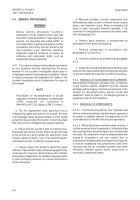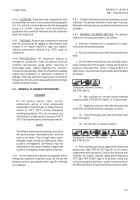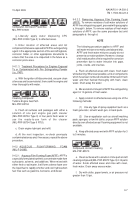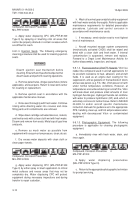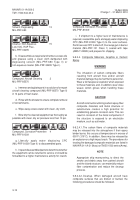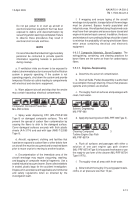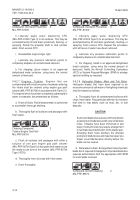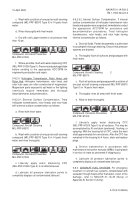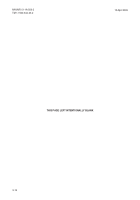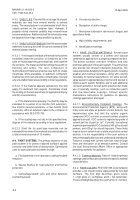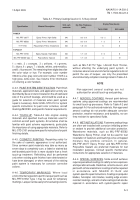TM-1-1500-344-23-2 - Page 168 of 240
9-14
NAVAIR 01-1A-509-2
TM 1-1500-344-23-2
15 April 2009
Compound, Corrosion Preventive
4
MIL-PRF-81309
h. Liberally apply water displacing CPC
(MIL-PRF-81309 Type II) to all surfaces. This may be
accomplished by fill and drain (preferred), flushing, or
spraying. Rotate the propeller shaft to coat cylinder
walls. Drain excess CPC.
i. Reassemble engine finger tight.
j. Lubricate any pressure lubrication points to
completely displace all contaminated lubricant.
k. For shipping, place engine in an approved
dehydrated metal container, using twice the normal
amount of desiccant.
9-8.2.7. Engines, Turbine. Engines that are
contaminated with small amounts of seawater entering
the intake shall be cleaned using engine gas path
cleaner (MIL-PRF-85704) in accordance with Table 2-3.
For engines which have been completely submerged in
water or seawater, decontaminate as follows:
a. Drain all fluids. Partial disassembly is authorized
to accomplish thorough draining.
b. Thoroughly flush all surfaces and passages with
fresh water.
Cleaning Compound
3
Turbine Engine Gas Path
MIL-PRF-85704
c. Flush all surfaces and passages with either a
solution of one part engine gas path cleaner
(MIL-PRF-85704 Type II) in four parts fresh water or use
the ready-to-use form of the cleaner (MIL-PRF-85704
Type II RTU).
d. Thoroughly rinse all areas with fresh water.
e. Drain thoroughly.
Compound, Corrosion Preventive
4
MIL-PRF-81309
f. Liberally apply water displacing CPC
(MIL-PRF-81309 Type II) to all surfaces. This may be
accomplished by fill and drain (preferred), flushing, or
spraying. Drain excess CPC. Repeat this procedure
until all traces of water have been removed.
g. Lubricate any pressure lubrication points to
completely displace all contaminated lubricant.
h. For shipping, install in an approved dehydrated
metal container, using twice the normal amount of
desiccant. Notify the Aircraft Controlling Custodians
(ACC) or System Program Manager (SPM) to arrange
special handling as required.
9-8.2.8. Helicopter Blades, Main and Tail Rotor.
Helicopter blades that have been exposed to an
excessive amount of salt water or fire fighting chemicals
shall be treated as follows:
a. Thoroughly flush all contaminated surfaces with
clean, fresh water. Pay particular attention to recesses
that tend to trap debris such as mud, dirt, or salt
deposits.
CAUTION
Some rotor blades have areas commonly known
as pockets or blade boxes with very small drain
holes. If blades have been immersed in salt
water, the drain holes may require enlargement
to facilitate decontamination of the blade spar.
Enlarging drain holes destroys the affected
pockets or blade boxes and requires repair at a
Depot Level Maintenance Activity before the
blade can be reused.
b. Allow water to drain. Enlarge drain holes in pocket/
blade box if required. Enlargement of pocket/blade box
requires authorization from the appropriate ACC/SPM
for each blade involved.
Compound, Aircraft Cleaning
2
MIL-PRF-85570
Back to Top

